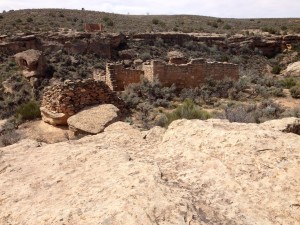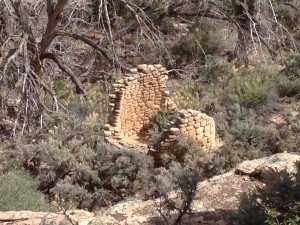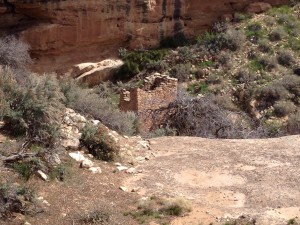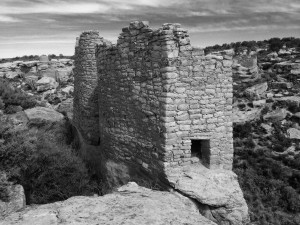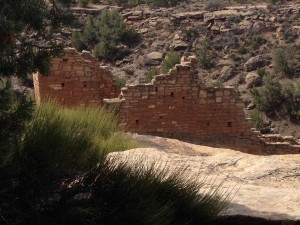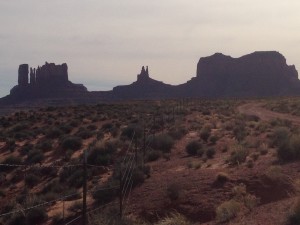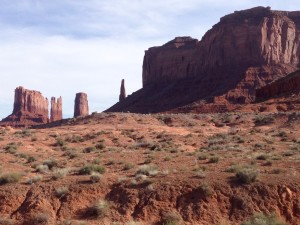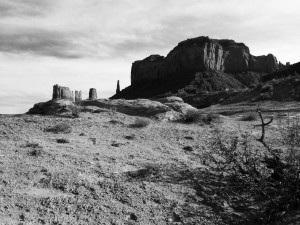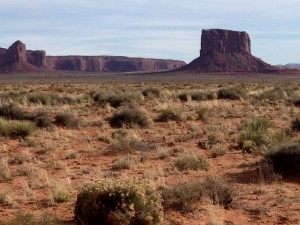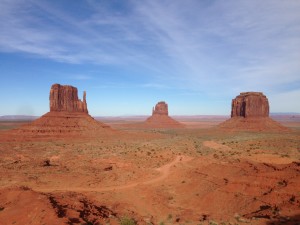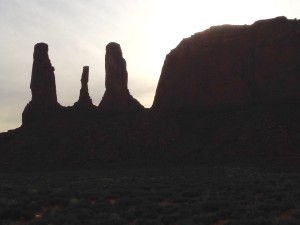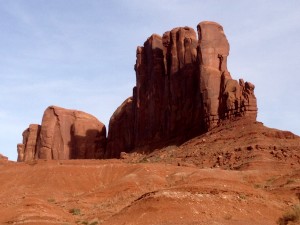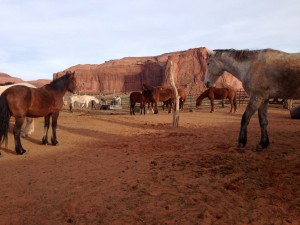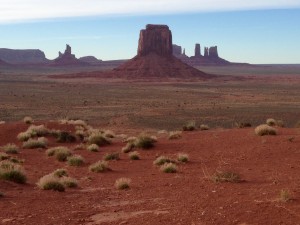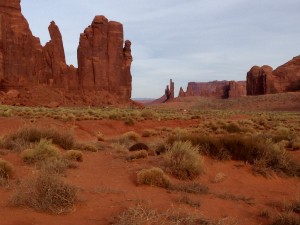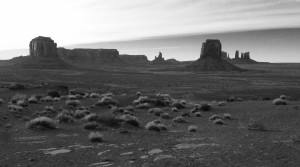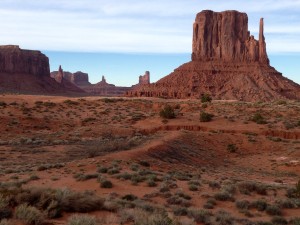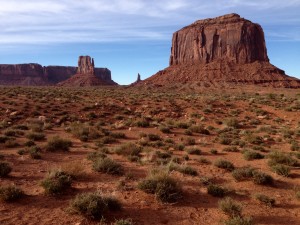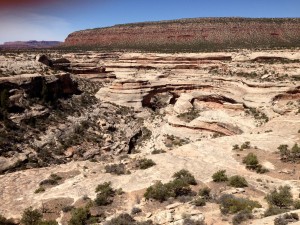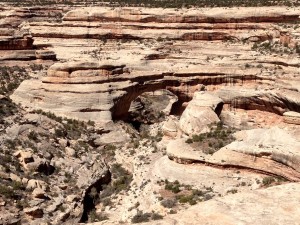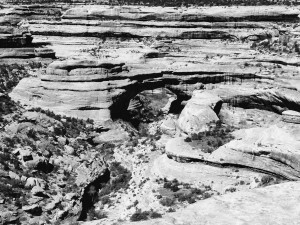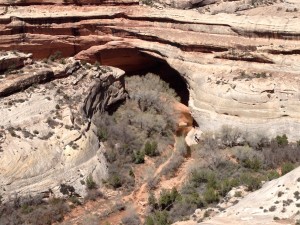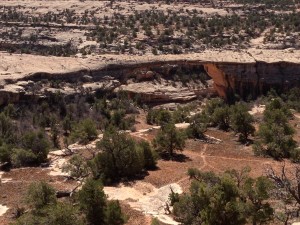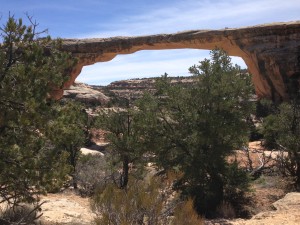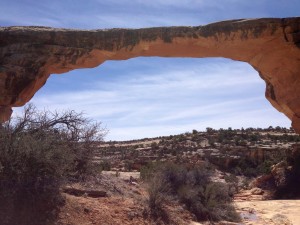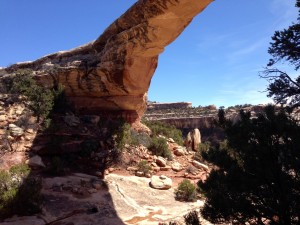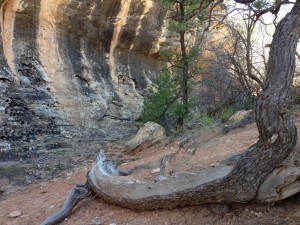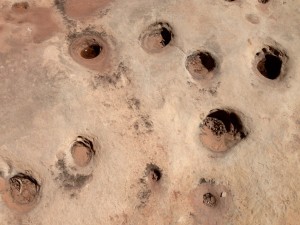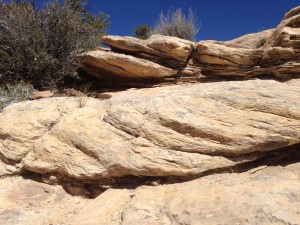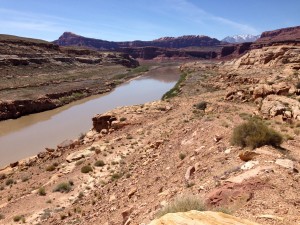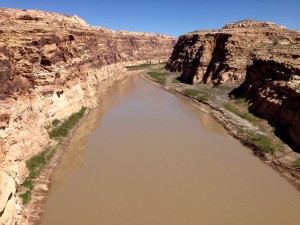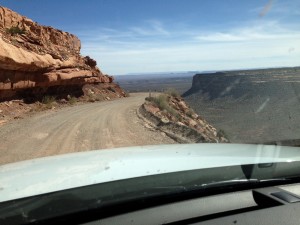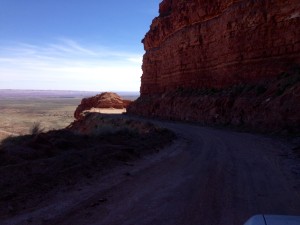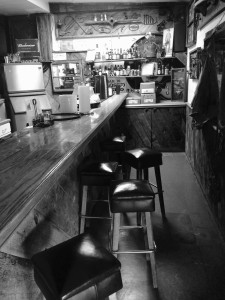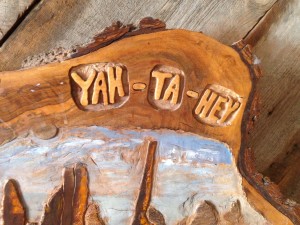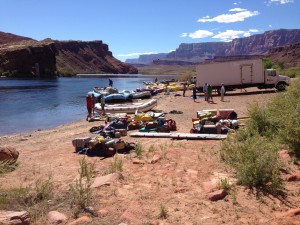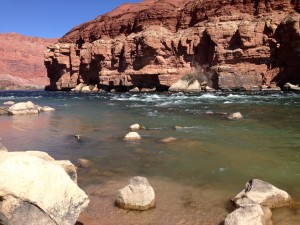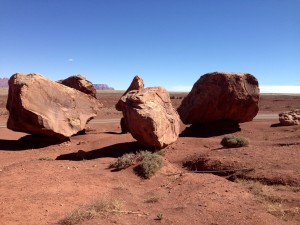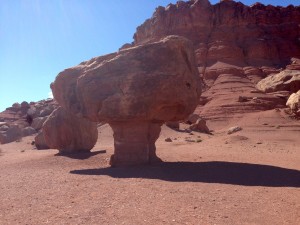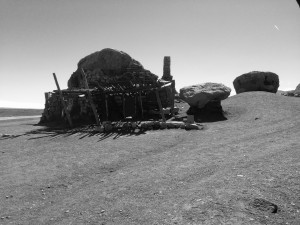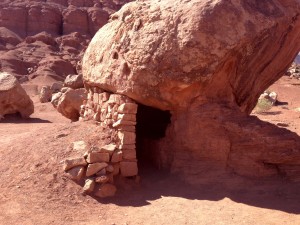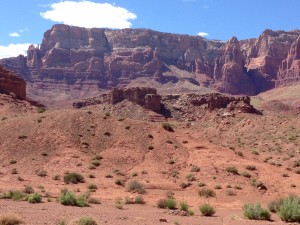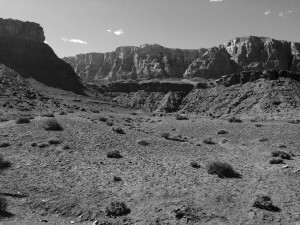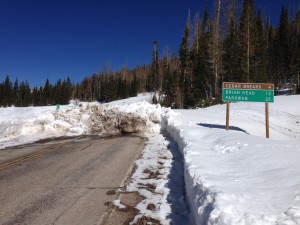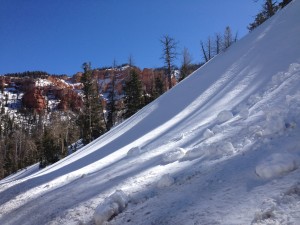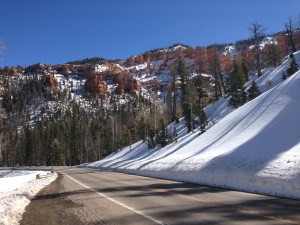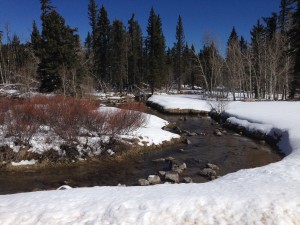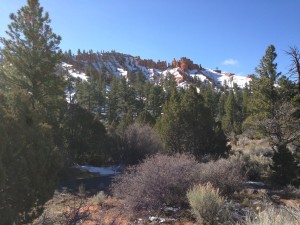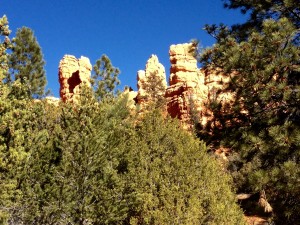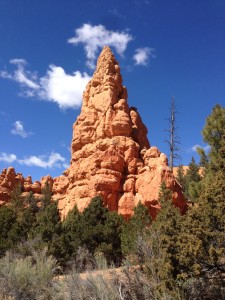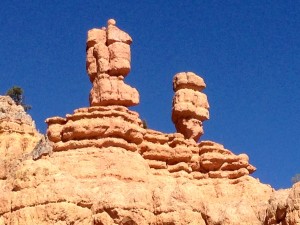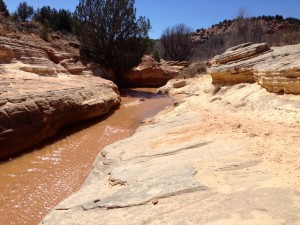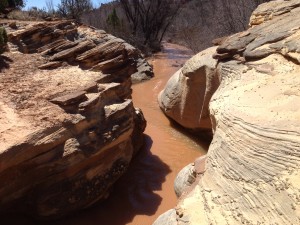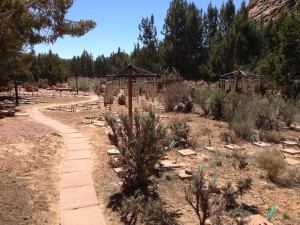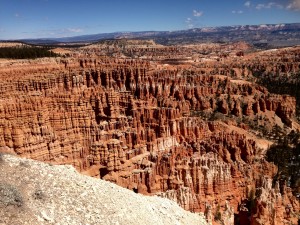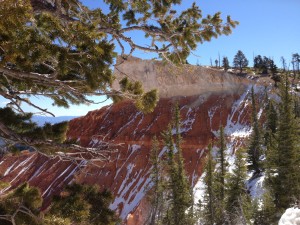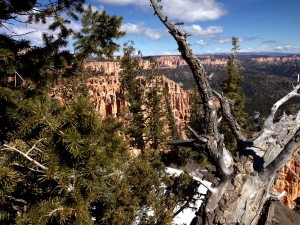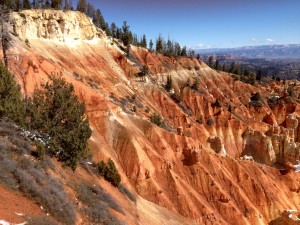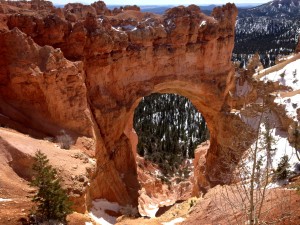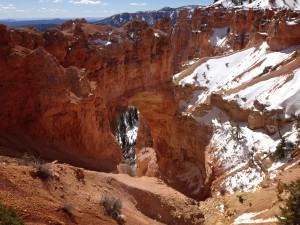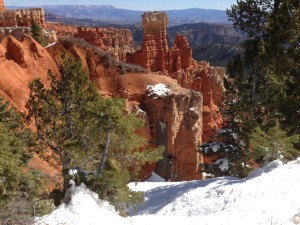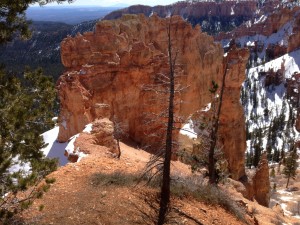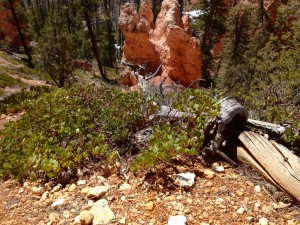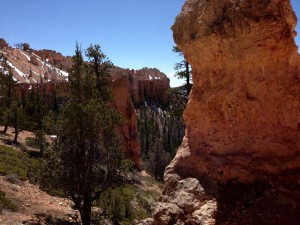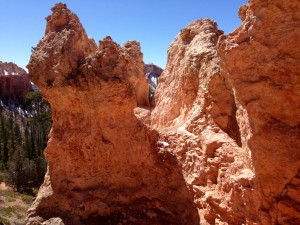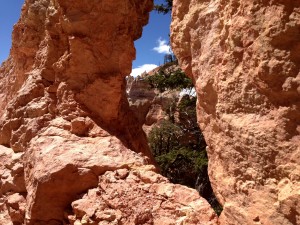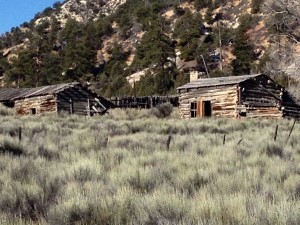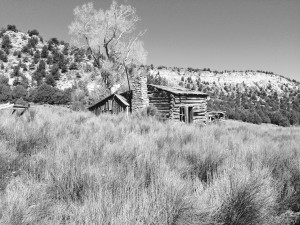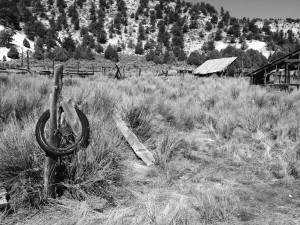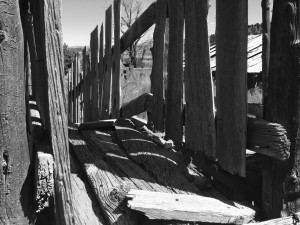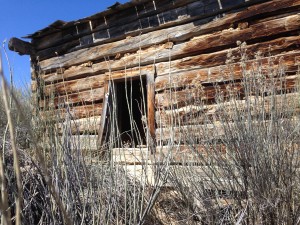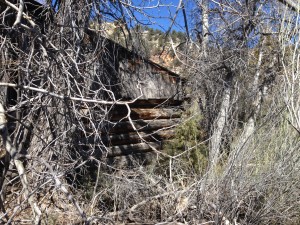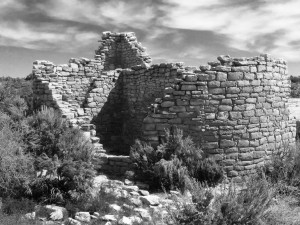 The first we know that there was structural ruins in this area came from an account in 1854 by a Mormon explorer named W.D. Huntington. Some twenty years later when it was being surveyed and photographed, photographer Henry Jackson gave Hovenweep it’s name, which means “deserted valley” in the Ute/Paiute language. The evidence was clear that someone had been here long ago but had also left long ago.
The first we know that there was structural ruins in this area came from an account in 1854 by a Mormon explorer named W.D. Huntington. Some twenty years later when it was being surveyed and photographed, photographer Henry Jackson gave Hovenweep it’s name, which means “deserted valley” in the Ute/Paiute language. The evidence was clear that someone had been here long ago but had also left long ago.
The ruins of several large communities are spread along an area of several miles. These photos are of a community settled in a small canyon, thus it became known as Little Ruin Canyon. Both rims have ruins and the distance from one rim to the other is never more than about 100 yards or so across.
The evidence is clear that all of these structures were built in a relatively short time period and these Puebloan people were no slackers as masons. Most of the structures have walls that are two and three courses thick. It is thought that some of the structures were residential, some defensive, and some purely ceremonial.
The Square Tower is the lowest ruin in the canyon and may have been three stories high. This is one thought to be a ceremonial structure.
It is also thought that the protection of their water source was the motivation of the ruins that seem defensive in either their structure or their position. The trail that takes you through the ruins area does go down to the bottom of the canyon and back up the other side. There is not flowing water in the canyon floor, but water is there, and better described as seeping.
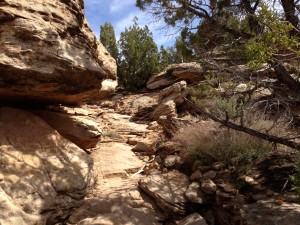
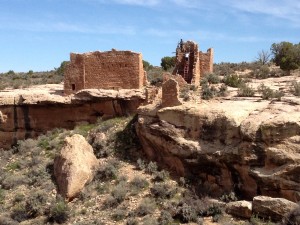 Like many people of southwestern states that came and went from the great Colorado Plateau, it is believed that the last inhabitants left this area in the late 1200s. They were here, they built homes and villages, and then they disappeared.
Like many people of southwestern states that came and went from the great Colorado Plateau, it is believed that the last inhabitants left this area in the late 1200s. They were here, they built homes and villages, and then they disappeared.
When I left Hovenweep I drove down to the Four Corners Monument and Navajo Tribal Park. This seems like a place that you go to so you can say you were there. I didn’t take any photos or even stand at the actual four corners spot. It was too busy with people doing silly touristy things which was entertaining for a little while. For my part, I would love to be here when a Navajo ceremony or celebration is taking place, and I had some great fry bread with apple butter. I’d go back just for that. 🙂
